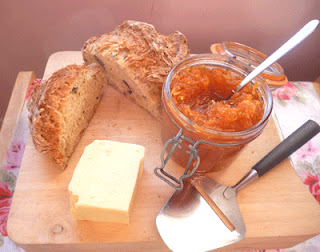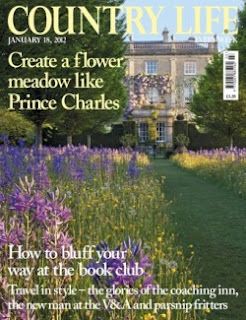John Ashton, in Social England Under the Regency, told of the convoluted eforts of the Prince Regent to reward his assistant, Colonel McMahon, and how various others in government circles tried to thwart the PR’s wishes. From Chapter 6, 1812:
But, be his (McMahon’s) origin whatever it might have been, he was a tool well fitted for the use of his august master, who, it must be owned, endeavoured to repay him; but, also, at the public expense. In 1811 General Fox died, and at his death, the office of Paymaster of the Widows’ Pensions became vacant. It was a perfect sinecure, the duties being done by others, and the salary attached to the office was over £2,000 per annum. The Commissioners of 1783, and of 1808, both reported and recommended the abolition of the Paymaster and Deputy-Paymaster of Widows’ Pensions, as being unnecessary, the one having very little to do, the other, nothing at all. The office of Paymaster had, in particular, been recommended to be done away with, on the demise of General Fox; but it was given to Colonel McMahon.
On January 9, 1812, on a Motion for Supply, Mr. Creevey spoke decidedly against this appointment, and moved as an Amendment, ‘That the House would, to-morrow se’nnight resolve itself into a Committee of Supply, in order to give an opportunity, in the interim, for the consideration which he had suggested,’ namely, that they would take into their earliest consideration, the various offices of emolument recently granted by the Crown to several of their members. This amendment was lost.
Thomas Creevey (1768-1838), MP
On the 22nd of February, the question of the Army Estimates being on, Mr. Bankes moved as an Amendment, ‘That the amount of the sum expected to be paid to the Paymaster of Widows’ Pensions, being 12d. in the pound on the said Pensions (£2,790 1s) be deducted from the said sum.’ This amendment was lost by a majority of sixteen.
But on the next night, Mr. Bankes brought the matter up again, and moved the virtual abolition of the office by omitting the sum necessary to pay it–and this was carried by a majority of three.
There was consternation among the Regent’s party at the temerity of the House in thus thwarting the Royal wishes, and, of course, the recalcitrated Commons must be taught a lesson, so McMahon was appointed Keeper of the Privy Purse, and Private Secretary to the Prince Regent; and in the caricature of ‘The Privy Purse and Political Beggars’ we find McMahon installed in his new position. Sheridan says, ‘Dear, good worthy Countryman, thou Pine Apple of Erin! consider I was burnt out,* not a penny in my purse, my credit very low–do–dear Mac, for the love of St. Patrick, give me a handful.’ Buckingham: ‘I have not above a Hundred Thousand a year, these hard times. Pray remember the Poor!’ Temple: ‘With my wife’s fortune and my own I have not above Forty Thousand a year. Pray remember the Poor! Grenville: ‘I have not above Fifty Thousand a year, a slender pittance. Pray remember the Poor!’ Mac Mahon replies: ‘Paws Off! no Blarney will do with me! I’m up to all your Gammon! and so is my dear Master. I’m cosy at last, in spite of all your speeches and paragraphs, and you may all go to the Devil, your Master!!!’
And doubtless, he thought he was cosy, but the Commons would not stand the job, and on the 23rd of March, his appointment was brought before Parliament, and the Hon. J.W. Ward asked whether it was a fact, and, if so, what salary was he to have? Mr. Perceval, as Chancellor of the Exchequer, admitted the appointment, and pointed out that Colonel Taylor had occupied the same position towards the King for many years, and the same salary that was given to that gentleman had been continued to Colonel McMahon. Mr. Whitbread pointed out that Colonel Taylor’s appointment was owing to the infirmities of the King, and that previously there had been no such post.
McMahon, by Lawrence, Vancouver Art Gallery
On the 14th of April, Mr. C.W. Wynn, in the House of Commons, moved for the Production of the Appointment of Colonel McMahon to the new Office of Private Secretary to his Royal Highness the Prince Regent. A very long discussion took place, and on a division, the motion was negatived by a majority of seventy-six. But the Ministry felt that the House was decidedly against them, and the appointment was not persisted in–McMahon afterwards became a pensioner on the Privy Purse.
Note from Victoria: Sir John McMahon (c.1754-1817), formerly a colonel in the foot guards, was a Privy Counselor from 1812 to his death in 1817. He was made a baronet by the Prince Regent. Several of his bothers also occupied important government positions in England and Ireland. In Georgette Heyer’s 1935 novel, Regency Buck, he is a minor character in Brighton and facilitates Judith’s first invitation to the Royal Pavilion.
I guess this is a sneaky way to insert one of my favorite authors, Georgette Heyer. Regency Buck was the first of her many Regency-set novels; her research was brilliant and her accuracy meticulous, setting a high standard for the rest of us authors.































